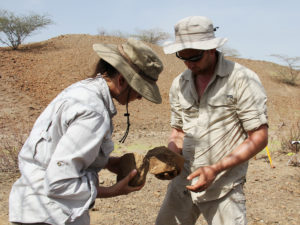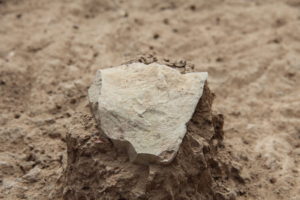
It was back in 2011 that archaeologists discovered an ancient stone tool near the western shore of Lake Turkana but the implications of the finding was so massive that the researchers wanted to make sure they had the proper evidence to support their claims.
“The saying goes, extraordinary claims require extraordinary evidence,” Jason Lewis, one of the archaeologists behind the groundbreaking discovery, told The World Today. “And so, even though we were convinced from the very first day that these tools are very old, that they’re clearly mapped and are from an original situ contexts, we had to document all of that very carefully with our team of international experts and we’re very pleased with the result.”
The claim they were about to make was certainly an extraordinary one that needed to be backed with all the evidence possible.
The Homo species were not the inventors of stone tools.
Instead, the dating of the ancient tools suggests that our hominin ancestors were using stone tools roughly 700,000 years before the emergence of the Homo genus.
In other words, a more primitive evolutionary ancestor was the true contributor of stone tools although the craft certainly wasn’t as frequently utilized until Homo specimens arrived with more flexible wrists and thumbs, researchers explained.
The earliest known Homo specimen was traced back to about 2.8 million years ago in what is now Ethiopia, but the recently discovered stools dated back roughly 3.3 million years.

Archaeologists Sonia Harmand and Jason Lewis, of Stony Brook University, examine stone tools. Initially, she says, the scientists didn’t realize the tools they found dated to hundreds of thousands of years before the first humans.
“Immediately, I knew that we had found something very special,” Sonia Harmand, a research associate professor at Stony Brook University in New York, told the New York Times. “These tools shed light on an unexpected and previously unknown period of hominin behavior, and can tell us a lot about cognitive development in our ancestors that we can’t understand from fossils alone. Our finding disproved the longstanding assumption that Homo habilis was the first toolmaker.”
The researchers believe the true stone tool inventors were likely a lesser known apelike creature known as the Kenyathropus or perhaps another early primate like the Australopithecus.
Either way, researchers all seem to agree that the findings rule out humans as the first to invent stone tools.
“The textbook answer was that stone tools were first used by the genus homo, which includes us, homo sapien,” Dr. Tyler Faith, an archaeologist from the University of Queensland told The World Today. “There’s very little probability that homo was around at 3.3 million, so this would suggest that an earlier human ancestor—probably Australopithecus, which includes the famous Lucy skeleton known from Ethiopia—is probably making and using some kind of stone tools.”
It’s a discovery that has taken the science community by storm but there have always been suspicions surrounding the idea of early humans inventing stone tools.
For many researchers, the earliest known stone stools made by humans, which date back roughly 2.5 million years ago in Tanzania, were too well made for them to be the first of their kind.
This would explain why the tools were already too precise and efficient—those tools very well may have been the result of years of improvements made to the original stone tools from hundreds of thousands of years before.
While the researchers are still sifting through other findings at the site, no bones have been discovered as of yet, which means it isn’t possible to confirm which primitive creature was responsible for the tools.

“What convinced the team (and other scientists who have seen the tools) was the fact that there was a whole stone-tool-making kit right there—all in one place,” NPR reported. “The kit was just like the ones the first humans used; it included big core stones, flat anvil stones and sharp flakes.”
Even more impressive was the fact that one of the flakes fit perfectly into the grooves of one of the core stones, something Harmand referred to as the “cherry” on top of this already extremely exciting discovery.
It proved that the carving and creation of the simple tools were deliberate acts and not caused by years of erosion or weathering.


